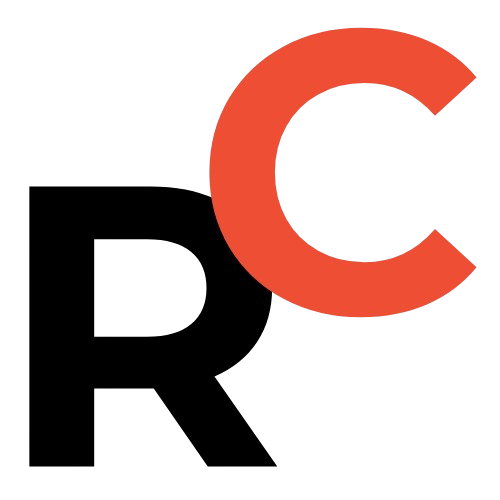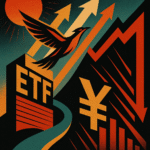Key Points
- Headline inflation: CPI -0.3% y/y in September 2025 with +0.1% m/m, largely driven by a -4.4% y/y fall in food prices.
- Producer prices: PPI -2.3% y/y (narrowed 0.6 percentage points from August) and Producer Purchase Prices -3.1% y/y; PPI was flat month‑on‑month.
- Core inflation rising: Core CPI +1.0% y/y, the fifth consecutive month of widening growth — a sign of resilient non‑food and service demand.
- Takeaway for markets: watch food price swings for headline volatility, Core CPI for underlying demand, and PPI/Producer Purchase Prices for margin and capex pressure (source: National Bureau of Statistics, Guojia Tongji Ju 国家统计局).

September 2025 CPI and PPI is the headline snapshot investors, founders, and supply‑chain leads should bookmark today.
Headline figures — quick numbers investors care about
- September 2025 CPI (Consumer Price Index, 居民消费价格指数) year‑on‑year: -0.3%; month‑on‑month: +0.1%.
- January–September 2025 average CPI year‑on‑year: -0.1%.
- September 2025 PPI (Producer Price Index for Industrial Products, 工业生产者出厂价格指数) year‑on‑year: -2.3% (narrowed 0.6 percentage points from August); month‑on‑month: 0.0% (stable).
- September 2025 Producer Purchase Prices year‑on‑year: -3.1% (narrowed 0.9 percentage points from August); month‑on‑month: +0.1%.
- January–September 2025 average PPI year‑on‑year: -2.8%; average Producer Purchase Prices year‑on‑year: -3.2%.

Resume Captain
Your AI Career Toolkit:
- AI Resume Optimization
- Custom Cover Letters
- LinkedIn Profile Boost
- Interview Question Prep
- Salary Negotiation Agent

CPI — Consumer prices: what moved and why
In September 2025, the nationwide CPI fell 0.3% year‑on‑year and rose 0.1% month‑on‑month.
Urban CPI decreased 0.2% year‑on‑year.
Rural CPI decreased 0.5% year‑on‑year.
Food prices fell 4.4% year‑on‑year while non‑food prices rose 0.7%.
Consumer goods prices declined 0.8% year‑on‑year; service prices rose 0.6% year‑on‑year.
Major year‑on‑year movements (September)
- Food, tobacco and alcohol: -2.6% y/y — pulled CPI down by roughly -0.74 percentage points.
- Notable food subcomponents (y/y):
- Fresh vegetables: -13.7% (≈ -0.35 percentage point impact on CPI).
- Eggs: -11.9% (≈ -0.08 pp).
- Livestock meat: -8.4% (≈ -0.27 pp); pork: -17.0% (≈ -0.26 pp).
- Fresh fruit: -4.2% (≈ -0.09 pp).
- Grain: -0.7% (≈ -0.01 pp).
- Aquatic products: +0.9% (≈ +0.02 pp).
- Other seven major CPI categories: six rose and one fell y/y:
- Other goods & services: +9.9%.
- Household goods & services: +2.2%.
- Clothing: +1.7%.
- Healthcare: +1.1%.
- Education, culture & recreation: +0.8%.
- Housing: +0.1%.
- Transport & communications: -2.0%.
Month‑on‑month movements (September)
- Overall CPI: +0.1% month‑on‑month.
- Urban: 0.0% month‑on‑month.
- Rural: +0.2% month‑on‑month.
- Food, tobacco and alcohol: +0.5% month‑on‑month — contributed about +0.13 pp to CPI month change.
- Food monthly subcomponents:
- Fresh vegetables: +6.1% (≈ +0.13 pp).
- Eggs: +2.7% (≈ +0.02 pp).
- Fresh fruit: +1.7% (≈ +0.03 pp).
- Aquatic products: -1.8% (≈ -0.04 pp).
- Pork: -0.7% (≈ -0.01 pp).
- Other categories: four rose, one unchanged, two fell month‑on‑month.
- Notable month changes: clothing (+0.7%), other goods & services (+1.3%), small rises in household goods & services and healthcare; transport & communications and education, culture & recreation fell.

PPI — Producer prices: supply‑side snapshot
September PPI fell 2.3% year‑on‑year, a narrower decline than in August (improvement of 0.6 percentage points).
Month‑on‑month PPI was flat (0.0%).
Producer purchase prices (input prices for industry) fell 3.1% y/y (narrowed 0.9 percentage points) and rose 0.1% month‑on‑month.
Year‑on‑year changes by broad industrial group (September)
- Producer prices for production materials: -2.4% y/y — lowered overall PPI by about 1.81 percentage points.
- Mining industry: -9.0% y/y.
- Raw material industries: -2.9% y/y.
- Processing industries: -1.7% y/y.
- Producer prices for consumer goods: -1.7% y/y — lowered overall PPI by about 0.45 percentage points.
- Food: -1.7% y/y.
- Clothing: -0.3% y/y.
- General daily‑use goods: +0.7% y/y.
- Durable consumer goods: -3.9% y/y.
- By input price category (Producer Purchase Prices): large declines for fuel & power (-8.1%), chemical raw materials (-5.5%), agricultural raw materials (-5.4%), building materials & non‑metallic minerals (-4.5%), and ferrous metal materials (-2.9%); by contrast nonferrous metals & wires rose +6.6%.
Month‑on‑month PPI dynamics (September)
- Production materials: roughly flat month‑on‑month.
- Mining: +1.2% month‑on‑month.
- Raw materials: flat month‑on‑month.
- Processing: -0.1% month‑on‑month.
- Consumer goods: -0.2% month‑on‑month (food -0.1%; clothing flat; general daily‑use goods +0.2%; durable consumer goods -0.4%).
- Input prices month changes: nonferrous metals & wires +1.2%; fuel & power +0.5%; ferrous metal materials +0.4%; building materials & non‑metallic minerals -0.6%; chemical raw materials -0.4%; agricultural raw materials -0.2%; textile raw materials -0.1%.

Find Top Talent on China's Leading Networks
- Post Across China's Job Sites from $299 / role, or
- Hire Our Recruiting Pros from $799 / role
- Qualified Candidate Bundles
- Lower Hiring Costs by 80%+
- Expert Team Since 2014
Your First Job Post

Statistical Bureau commentary — what the numbers mean
The National Bureau of Statistics (Guojia Tongji Ju 国家统计局) notes consumer market activity was generally stable in September.
Core CPI — CPI excluding food and energy — rose 1.0% year‑on‑year.
Core CPI year‑on‑year growth has expanded for five consecutive months.
The construction of a national “Unified Market” (Tongyi Da Shichang 统一大市场) has continued to deepen, optimizing market competition order.
PPI month‑on‑month was flat; year‑on‑year decline narrowed, reflecting both base‑effect and improving supply‑demand conditions in some industries.
Why CPI fell y/y but core CPI rose
- September’s y/y CPI decline mainly reflects base effects (the “tail effect”) and continued food and energy price weakness: food -4.4% y/y and energy -2.7% y/y.
- In the -0.3% CPI y/y change, approximately -0.8 pp came from the tail (base) effect and +0.5 pp from current year price changes.
- Core CPI (excluding food and energy) rose 1.0% y/y — the fifth consecutive month of widening growth and the first time in nearly 19 months that core CPI reached 1.0% y/y.
- Industrial consumer goods excluding energy rose 1.8% y/y, with significant gains in precious metal jewelry (gold and platinum), household goods and communications equipment.
- Services prices were broadly stable: overall services +0.6% y/y.
- Travel‑related prices (airfares, hotel stays, package tours) eased month‑on‑month due to the end of peak summer season and the calendar placement of Mid‑Autumn Festival this year.
Why PPI decline narrowed
- PPI month‑on‑month has been flat for two consecutive months.
- Structural improvements in supply and demand supported price stabilization in some sectors: coal processing and coal mining prices rose; black metal smelting & rolling prices rose; photovoltaic (Guangfu Shebei 光伏设备) equipment and component manufacturing returned to month‑on‑month gains.
- International input‑price moves (notably oil) weighed on domestic petroleum‑related industries: oil extraction and refined products prices fell month‑on‑month.
- Year‑on‑year PPI narrowing reflects both a lower comparison base from last year and policy effects that support market order and industry restructuring.
- Several industries showed smaller y/y declines, while higher‑end manufacturing and some consumer upgrading categories posted y/y price gains (aircraft manufacturing, electronic specialty materials, resource recycling, craft & ceremonial goods, sporting goods, and nutrition food manufacturing).

ExpatInvest China
Grow Your RMB in China:
- Invest Your RMB Locally
- Buy & Sell Online in CN¥
- No Lock-In Periods
- English Service & Data
- Start with Only ¥1,000

Methodology & notes
- CPI definition: Consumer Price Index measures the change over time in the price level of a fixed basket of goods and services purchased by households.
- Statistical scope: CPI covers eight major categories and 268 basic subcategories across urban and rural areas nationwide.
- Survey method: Sampled outlets were selected; prices were collected using the “fixed people, fixed outlets, fixed time” principle via in‑person visits and internet sources.
- Coverage includes approximately 31 provinces/regions, ~500 cities/counties, and over 100,000 price collection points (stores, supermarkets, fresh markets, service points, and e‑commerce platforms).
- PPI coverage: PPI covers 40 industrial sectors and over 1,300 basic product categories; Producer Purchase Prices cover nine categories and over 800 product categories.
- Industrial price surveys combine focused and typical enterprise sampling covering more than 40,000 industrial firms.
- Rounding: Minor inconsistencies between totals and component sums may occur because of rounding.

Bottom line — what investors and founders should remember
September’s data show continued moderation in headline consumer inflation driven by food and energy price weakness.
Core inflation has been steadily rising — a sign of underlying demand for non‑food items and services.
On the production side, the PPI decline is narrowing as certain heavy industry and higher‑end manufacturing sectors stabilize and some input prices recover.
International oil price volatility continues to affect petroleum‑related sectors.
Track these signals:
- Food price swings — immediate consumer impact and CPI volatility.
- Core CPI — useful for assessing domestic demand resilience.
- PPI & Producer Purchase Prices — ahead‑of‑the‑curve indicator for margins, industrial capex, and supply‑chain price pressure.

Linking opportunities — internal and external anchor ideas for content teams
- Anchor for National statistics: “National Bureau of Statistics (Guojia Tongji Ju 国家统计局) release”
- Anchor for CPI deep dives: “China CPI trends September 2025”
- Anchor for PPI outlook: “PPI and producer purchase prices analysis”
- Anchor for sector focus: “manufacturing price trends”, “food inflation”, “energy & fuel prices”, “photovoltaic equipment (Guangfu Shebei 光伏设备)”
- Anchor for investor content: “inflation implications for equities and supply chains”

Key takeaways
- CPI -0.3% y/y, PPI -2.3% y/y in September 2025.
- Core CPI up 1.0% y/y, widening for five months — watch services and higher‑end consumer demand.
- PPI narrowing suggests some stabilization in industrial pricing, with mixed input‑price pressure.
- Use CPI for consumer demand signals and PPI for margin and capex pressure in industrial sectors.

References
- September 2025 CPI and PPI Release – National Bureau of Statistics
- China economic news and data coverage – Xinhua
- China economic coverage and analysis – China Daily
Keep watching the September 2025 CPI and PPI signals — they matter for markets, startups, and supply chains.



![Kweichow Moutai Talks Growth, Maotai 1935 Sales, and Global Plans: Key Takeaways from the 2024 Earnings Call [FreshFromChina]](https://freshfromchina.com/wp-content/uploads/2025/05/Kweichow_Moutai_Talks_Growth_Maotai_1935_Sales_and_Global_Plans_Key_Takeaways_from_the_2024_Earnings_Call_TeamedUpChina-150x150.png)

